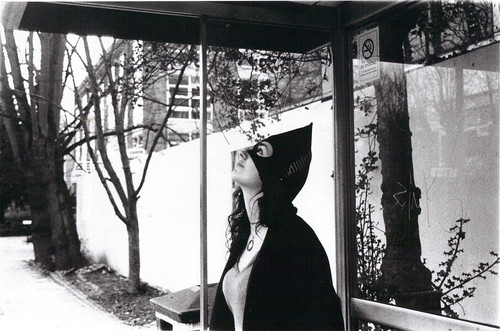New week, new exciting tasks! This week I have been exploring some digital tools for collaborative writing in the English class. The first activity consisted of selecting one of the four pictures in each column, three columns in total, and writing a 50-word story-starter based on those pictures.
These are the three pictures I chose and my short story:
It was a beautiful sunny morning on Coconut island. Nina woke up with the idea of enjoying the exciting school trip to the city of Pombo. She had breadfast, hastily kissed her mum and raced off to take the school bus. Nobody could imagine that that would be a day for sorrow and grief...
- The Story Kitchen
- Creative Writing Prompts
- Story Starters
- Five Card Flickr Stories
- Bitstrips
- Pic-Lits
- Storybird
- Zooburst
- Dreamdoze
- Oh Life
- Future Me
- Letter Pop
One of the tools I liked the most was Five Card Flickr Stories, an interesting website based on the Five Card Nancy game which lets you pick five pictures from a group of images from Flickr and get some inspiration to write creative stories. Would you like to read my story? Could you continue it? Could you write a different story with the same pictures?
Five Card Story: Through the Bare Land
a Five Card Flickr story created by Inma Alcázar
flickr photo by Serenae

flickr photo by bionicteaching

flickr photo by IKnowHowToWhistle

flickr photo by bionicteaching

flickr photo by Serenae
Strolling down the narrow streets of Katmandu where not much happens, legend has it that a mysterious woman dressed in black used to wander through the forest. All the villagers were completely frightened. No birds, no crops, no flowers grew in the area, just death and desolation.
I think this website is a great tool for Secondary school and Bachillerato students (15-18) to develop their creative writing skills through these visual prompts. It is true that students can do this without technology. However, what this tools adds to education is the possibility to receive feedback from other students. In my opinion, this fact is very motivating for them since they are writing for an audience, not just for the teacher.
How can we use it in the English class?
- Collaborative writing: publish your own student and share it in your English class blog with your students. Ask them to write two or three more lines each to the story.
- 5 pictures = a lot of stories: go to Five Card Flickr Stories, choose five inspiring photographs, embed them in your class blog. Divide students in groups of three and ask them to write their own collaborative story using those pictures.
- Creative writing: as in the previous activity but letting students to choose their own pictures.
- Twitstory: ask students to write 140 characters stories based on five pictures, chosen from Five Card Flickr Stories, using a class hashtag. Embed students' stories in the class blog using EmbedTweet. Students vote their favourite one.
- Optional: provide them with different categories for their stories:
- horror
- romantic
- funny
- inspirational
- BubbleUs Brainstorming made simple
- Entri Get feedback on rough drafts / Jot down ideas and share through Twitter
- Google Docs Collaborative writing
- LiveTyping Collaborative writing
- MixedInk Collaborative writing for groups
- Novlet Collaborative writing of nonlinear stories
- ThinkFree Online Virtual office / Edit documents in your web browser
- TypeWithMe Collaborative writing
- WriteBoard Sharable web-based documents
- Zoho Writer Online word processor - create, connect, collaborate
We had to read other teachers' stories, choose one story starter we liked and contribute to it using one of the previous tools mentioned. I chose Vicky Theodoraki's story about The Sanders and their strange neighbour, Mr Tucker, using Just Paste It, a cool tool for collaborative writing. What I liked about this tool is that you don't need to spend time signing in, you can just start writing, include pictures or even a video, and share the link to encourage more people to contribute to it. This was our story:
The loving Sanders family had just moved to a provincial town. Little did they know that their life would soon take a sinister turn. Their new neighbour Mr Tucker, an elderly man, had an unworldy quality. Howls and all sorts of weird sound would often come from his house.
Last night, while they were having dinner in the garden their daughter Margaret screamed: 'Have you seen that? Look! There is an odd shadow coming out of the wall. I mean, out of the wall where there isn't a hole.'
"What in the world is that?" cried Mother Sanders. Fearful, she quickly escorted her family back into the house. Dinner in the garden had sounded like such a nice idea, but now it seemed a much safer choice to be inside. Who could they talk to? What could they do? What was it that they saw?!
When they went inside they could hardly sleep. They kept on talking about the odd shadow that Margaret saw and then Mother Sanders had an idea. She decided that in the morning they will go over to Mr. Tucker's house an ask him to come for a visit. The point was to try and find out what he was like and what were the howls and weird sounds that were heard from his house.
The family had a restless night and could hardly wait for morning. As soon as dawn broke and the first rays lit up the little town, they were up and about, eager to solve the mystery of their mysterious neighbor.
They arrive to Mr. Tucker's house and knock the door, but nobody respond then they decide to enter. It's dark inside still but they have a light. They look across the room and see in the middle a beautiful glass vase on a table and a painting on the wall. They call Mr. Tucker but nobody respond. This is very mysterious.
Suddenly there was some noise under the table. They all jumped up but it was just a cat. When their daughter wanted to caress it, the cat ran away. Then the daughter shrieked - the painting on the wall moved.
The moment they realised there was an unmarked door set in the wall, it creaked open. Mr Sanders stood in the doorway for a moment before he popped his head through the narrow oak door. He decided to enter the pitch-dark corridor.
He disappeared in the darkness. His wife wanted to follow him there but SLAM - the door closed and they could not open it again. Mr Sanders was on his own in the dark.
- Would you like to know more about digital storytelling? Visit 50 + Web 2.0 ways to tell a story, a wiki full of ideas which was created by Alan Levine.
- What other ideas can you come up with for using these tools?















